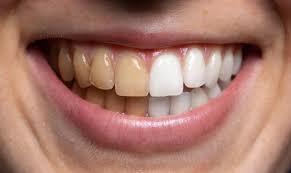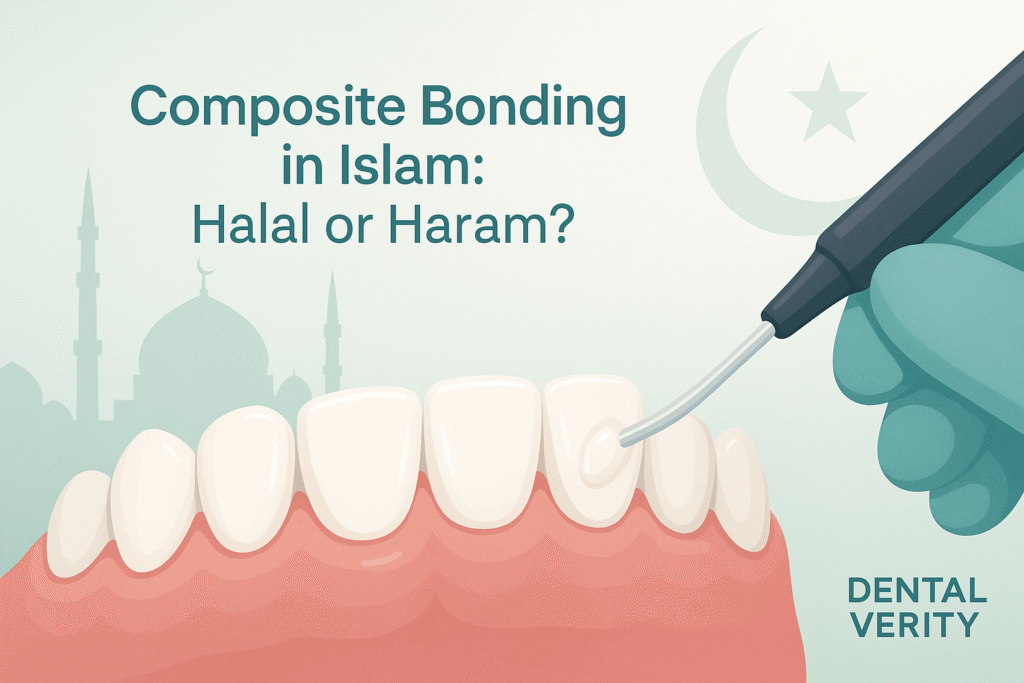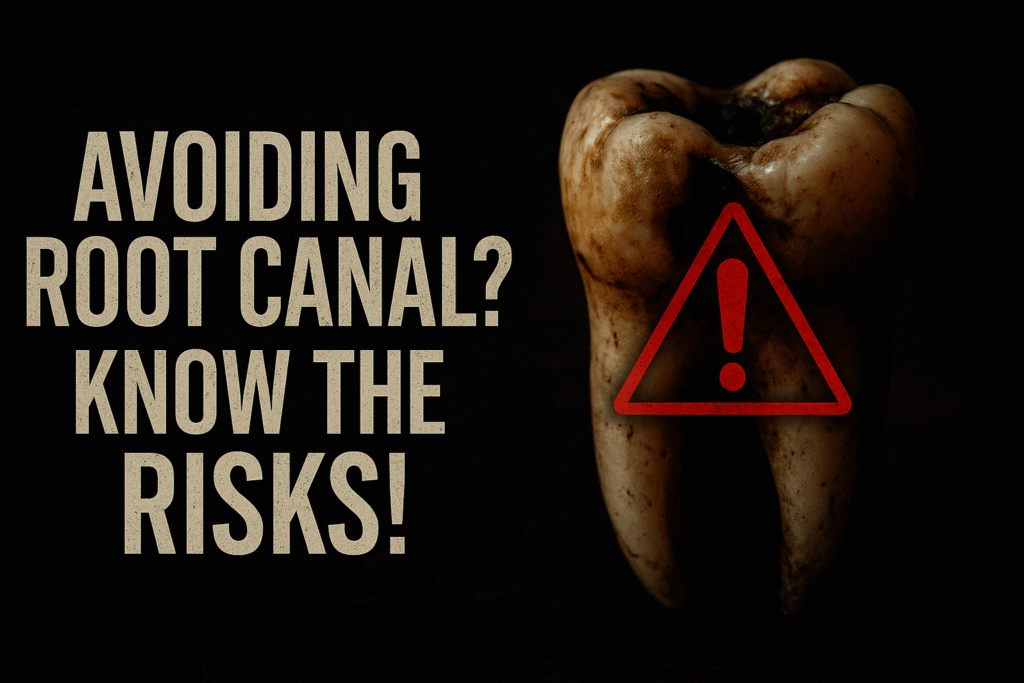
A movie-star smile is something many people dream of, and as research shows, the worldwide demand for teeth whiteners has grown annually. With an expected 34% jump in market value from 2014 to 2025, more global citizens are looking for the best whitening product to achieve a stain-free look. But before jumping into solutions, it’s essential to assess the type of teeth stains you have.
Teeth can become discolored and yellow due to various reasons, and each stain needs to be treated differently. Whether you’re getting ready for a red carpet event or just want to dazzle with a brighter smile, knowing the different types of stains and whitening options available can help. This blog post will discuss how to remove stubborn teeth stains and provide tips on how to keep your teeth white and bright for years to come.
What Causes Teeth Stains? Understanding the Reasons Behind Discoloration
Your pearly white teeth can lose their brightness due to many reasons. These stains don’t just appear overnight—they are caused by a variety of factors that impact the color and health of your teeth over time.
- Foods & Drinks – Items like coffee, tea, colas, wines, fruits, and vegetables can leave a stain on your teeth over time.
- Tobacco Use – Whether it’s smoking or chewing, tobacco leads to stubborn stains that can be hard to remove.
- Poor Dental Hygiene – Not brushing, flossing, or rinsing properly allows plaque and other substances to build up and cause discoloration.
- Disease & Treatments – Some conditions affect enamel and dentin, leading to stains. Medications like antibiotics tetracycline and doxycycline can also cause discoloration in children developing teeth before the age of 8.
- Aging & Genetics – As you age, the outer layer of enamel wears down, revealing the dentin underneath. Genetics also play a role, as some people naturally have brighter, thicker enamel than others.
- Environmental Factors – High exposure to fluoride from excessive sources can lead to tooth discoloration.
- Trauma & Damage – A fall or injury can disturb the formation of young teeth and cause permanent stains in both adult and developing teeth.
Understanding these causes can help you prevent future stains and take the right steps to restore your white smile.
Types of Tooth Stain
Throughout different stages of life, one of these three types of stains may dull your smile.
Surface Stains: How Extrinsic Stains Develop
Extrinsic stains appear on the outer layer of the tooth and are caused by external sources like food, drinks, and tobacco use. Over time, the hard enamel comes into contact with staining items such as berries, red wine, and nicotine, which get absorbed, leading to discoloration. While these stains don’t move below the dentin, they can make your teeth appear dull and unhealthy.
The good news is that extrinsic stains are the easiest to remove. Regular dental hygiene, including professional cleaning, home teeth-whitening systems, and whitening methods, can help lift stains from the surface. If left untreated, these stains can develop further, making it harder to restore your teeth to their natural brightness.
Deep Stains: Understanding Intrinsic Tooth Discoloration
Unlike surface stains, intrinsic stains begin inside the tooth and affect the dentin, making them tougher to remove. These stains are caused by internal sources such as aging, disease, genetics, trauma, and medications. Certain health conditions and medication use, like hydrogen peroxide, carbamide peroxide, or other whitening ingredients, can also contribute to discoloration. Since these stains occur beneath the surface, they do not respond well to home remedies or basic cleaning methods.
For effective results, professional treatment is often required. Advanced whitening methods with active ingredients can help, but deep stains may need a dentist’s intervention. If the stains happen due to medications or trauma, your dentist may recommend customized whitening products or restorative solutions to bring back your teeth’s natural brightness.
Aging and Tooth Stains: Why Teeth Darken Over Time
As you get older, your body changes, and your teeth are no exception. Over time, the enamel thins, making the dentin underneath more visible. This can cause your teeth to appear a darker shade of yellow-brown. This age-related staining happens naturally due to wear and tear, and it can be difficult to reverse with basic whitening methods.
To keep teeth looking bright, being diligent with oral hygiene is key. Although intrinsic stains from aging can be stubborn, professional whitening techniques may still work best to improve their appearance. Addressing staining early and maintaining a good routine can help slow down these effects and keep your smile youthful.
Removing Tooth Stains: Effective Solutions for a Brighter Smile
No matter if you’re dealing with extrinsic, intrinsic, or age-related stains, there are several ways to bring back your bright smile. While some stains require professional treatment, many can be tackled with at-home whitening solutions.
At-Home Whitening: Easy Solutions for Stain Removal
Using the right products can help remove extrinsic stains and even lighten intrinsic or age-related staining. However, some ingredients like hydrogen peroxide and carbamide peroxide may cause teeth sensitivity, so choosing the right method is important.
Whitening Toothpaste and Mouthwash
Brushing your teeth twice daily with whitening toothpaste and using mouthwash can help lift stains from the surface. These products use abrasives to scrub stains away gradually and may also contain bleaching agents to remove deep-set discoloration. Over time, they can make your teeth appear whiter, brighter, and more polished.
Tooth Whitening Gel and Trays
Available over-the-counter or through a custom dentist-made option, whitening gels contain peroxide-based bleaching agents that work by filling trays (similar to gum shields) placed over the teeth. Some kits include LED light devices to intensify the whitening effect, while custom trays offer a more effective fit for better gum protection. Though highly effective, they can be expensive.
Whitening Pens
A quick solution for people on the go, whitening pens contain a bleaching gel that you brush on in a thin layer. These pens fit in purses, pockets, or backpacks, offering better control over where the gel is applied, making it easier to avoid sensitive gum tissue.
Tooth Whitening Strips
This at-home method involves strips coated with a pre-applied gel that sticks to your teeth for easy application. The gel bleaches the teeth without needing a tray. However, products with high levels of hydrogen peroxide or carbamide peroxide may cause sensitivity and should be applied carefully to avoid gum irritation.
Professional Whitening: When In-Office Treatments Are the Best Option
If at-home whitening doesn’t work and your teeth stains won’t budge, visiting a dentist for a professional in-office treatment might be the best choice. This method uses stronger products and advanced technology like laser whitening to deliver rapid, dramatic results. It’s an efficient way to whiten discolored teeth, especially for deep stains that are hard to remove with other methods.
While in-office whitening can be expensive, there are ways to reduce the price. Some dental clinics offer affordable services, and you can also check if a low-cost dentistry school in your area provides treatment at a lower cost. Taking the right course of action can help you achieve a brighter smile without worrying about financial concerns.
Natural Ways to Get Rid of Brown Stains on Teeth
Brown stains on your teeth can be caused by diet, lifestyle habits, and tobacco use. Darkly colored foods and drinks like coffee can also lead to staining over time. A poor oral hygiene routine allows plaque and tartar build-up, which traps sticky substances, bacteria, and food debris, making your teeth look dull. In some cases, these stains can even result in tooth decay, cavities, spots, or patches.
To prevent staining, maintain a proper oral hygiene routine by brushing and flossing daily. Cutting back on stain-causing foods and drinks can help reduce discoloration. Natural methods like oil pulling or using baking soda may help, but for stubborn stains, a professional cleaning may be necessary to remove plaque and tartar effectively.
Can Brown Stains on Teeth Be Removed?
Yes, brown staining on teeth can be removed, but the method depends on the cause. If foods, drinks, or tobacco are the culprit, reducing their intake and improving oral hygiene can help. For stubborn stains, at-home or professional whitening may be needed. When plaque and tartar build up, a dental cleaning is necessary. If tooth decay or cavities are present, they must be treated by a dentist. Once the decayed tissue is removed and the tooth is restored, you will see an improvement in the appearance of your smile.
Book an Appointment for a Brighter Smile
If brown stains or other teeth discoloration are affecting your confidence, it’s time to make an appointment with a dentist. A professional can assess your oral health, recommend the best whitening treatments, and provide safe, effective solutions to restore your smile. Regular dental cleanings and expert advice will help keep your teeth stain-free and looking their best. Don’t wait—schedule your visit today for a healthier, brighter smile!



